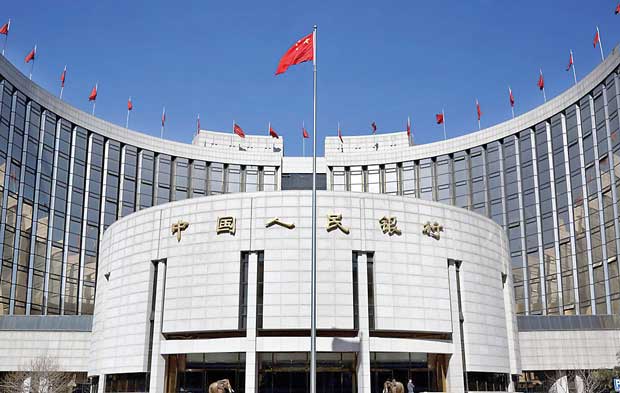02 Jun 2017 - {{hitsCtrl.values.hits}}

By Ran Li
China’s leverage ratio — the ratio of debt to assets or equity — is rising at an alarming pace and approaching a historical high. High leverage ratios have in the past caused concern that financial asset bubbles in China might soon burst.
According to the Bank for International Settlements, although the overall non-financial leverage ratio remains reasonable, the proportion of non-financial corporate borrowing to GDP in China has surged from 99 per cent to 170 per cent since the global financial crisis. Moody’s estimates that even this could be a significant underestimate due to credits given through unrecorded ‘shadow banking’ transactions.
The root cause of the rising leverage ratio is incomplete economic reform, especially the government’s continued protection of state-owned enterprises (SOEs). Disaggregated data confirm that SOEs were the main contributors to rapidly rising leverage ratios in recent years, while the private sector actually showed signs of deleveraging. Firm-level data compiled by China’s National Bureau of Statistics show that SOEs still take 55 per cent of total credits but only contribute 30 percent of total fixed asset investment. Bank credits are also much cheaper for SOE borrowers, despite their lower productivity and profitability. The government’s implicit guarantee of SOEs makes them less ‘risky’ but encourages them to spend more — a typical moral hazard problem.
As the lender of last resort, the People’s Bank of China (PBC) is expected to act in a timely way to contain financial risks associated with rising leverage ratios. The PBC has already micro-adjusted their monetary policy stance from prudent with an easing bias last year to prudent with neutral
bias this year. This may have been out of concern for growing financial risks. But so far there is not a widely accepted rule as to how central banks should respond to financial instability. Some suggest that central banks should take into account financial conditions when making monetary policy, while others argue that central banks should focus on conventional policy objectives such as price stability.
I recently completed a study examining the PBC’s response to financial stability indicators by asking three specific questions. First, would a tightening monetary policy decrease leverage? Second, how effective would it be? And third, what are the potential costs of a monetary policy response to financial risks?
Two forces offseting each other
In theory, tightening monetary policy increases firms’ cost of borrowing and would directly decelerate credit growth. But the leverage ratio can also be affected by the indirect slowdown of asset accumulation due to inhibiting economic growth. The two forces offset each other and the net effect varies with economies and periods. Higher potential economic growth with great demand for liquidity makes the latter effect dominant. Yet a tightening monetary policy may inhibit asset growth more than that of liability and actually increase leverage.
The presence of SOEs further complicates the question. Under a tightening monetary policy environment, banks charge a higher lending rate and become more cautious when granting loans. But SOEs are less sensitive to borrowing costs than other firms and are often considered less risky borrowers with implicit government guarantees. This makes SOEs more favourable to financial institutions. The decrease of loans to SOEs would therefore be smaller than to non-SOEs, and in extreme conditions loans to SOEs, which are less productive, would actually increase and overall leverage would rise.
But even if tightening monetary policy has the ability to tame surging leverage, could it be effectively implemented? Unlike traditional monetary policy targets, financial variables such as leverage can be very volatile and subject to not only real shocks but also more unpredictable financial shocks like market sentiments and drastic political changes.
Real impact on financial variables
This implies that only a significant change of monetary policy can have a real impact on financial variables. And central banks would need accurate forecasts of the sources and sizes of unpredictable external financial shocks.
But what is the cost? Monetary policy is a blunt tool, and has broad impacts on the economy. When its goal is diverted to containing financial risks, there is less focus on conventional inflation and unemployment targets. In China, inflation and the leverage ratio have been in general moving in opposite directions. A single monetary policy action aimed at lowering leverage will probably push up inflation if this pattern continues.
Financial risks can be harmful and central banks should move with extreme caution in responding to them. For China, monetary policy could help with lowering leverage. But is not the ideal tool to deal with it.
The effects of monetary policy in China are blurred due to economic frictions, including SOE-related distortions. Simply drawing on experiences from advanced economies may lead to unintended results. And with monetary policy reform ongoing, China’s financial markets are still underdeveloped, the markets are highly volatile and investors tend to overreact. Frequent monetary policy adjustments in response to financial instability would only enhance market volatility.
Trying to maintain both inflation and financial stability would divert the limited power of monetary policy and complicate the evaluation of Central Bank performance. To address the surging leverage issue, the root cause of rising leverage should be addressed through reform. China should adopt and strictly implement macro- and micro-prudential measures to prevent systemic risks. Instead of directly targeting leverage, the PBC should take the spillover effects to financial markets into consideration of all their decisions and closely cooperate with financial regulators. Further financial liberalisation and the removal of special protection for SOEs are also essential.
Courtesy East Asia Forum
(Ran Li is a PhD candidate at the National School of Development, Peking University)
25 Nov 2024 1 hours ago
25 Nov 2024 2 hours ago
25 Nov 2024 2 hours ago
25 Nov 2024 2 hours ago
25 Nov 2024 3 hours ago